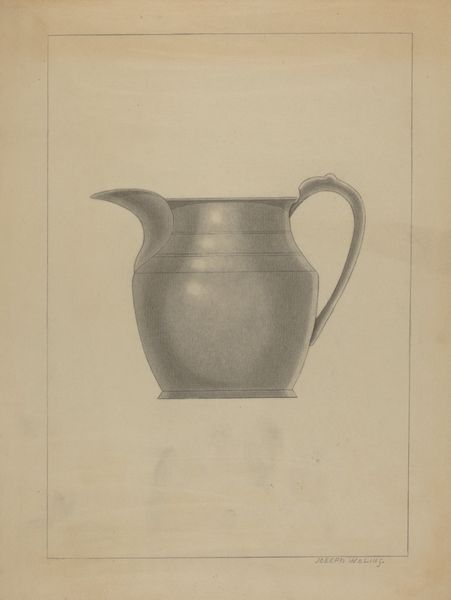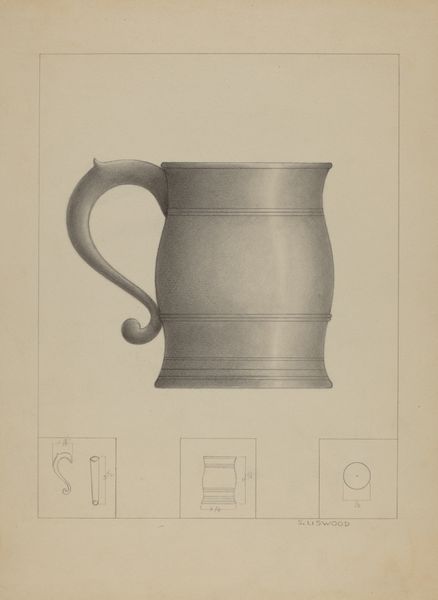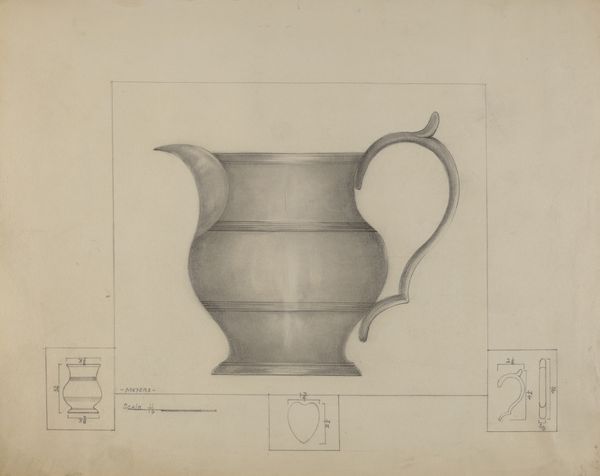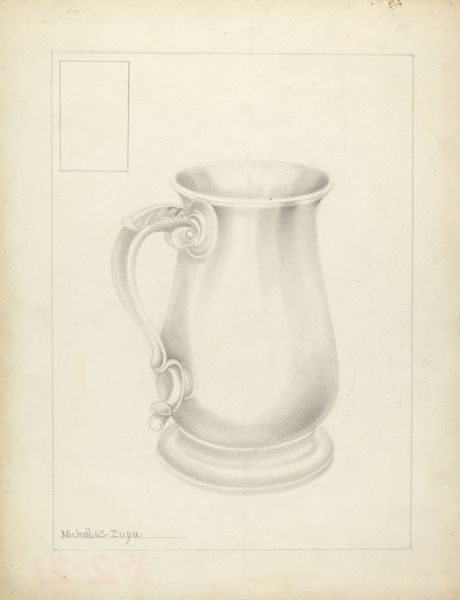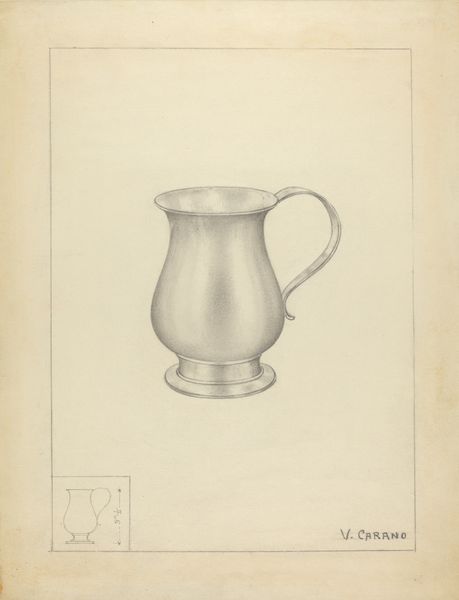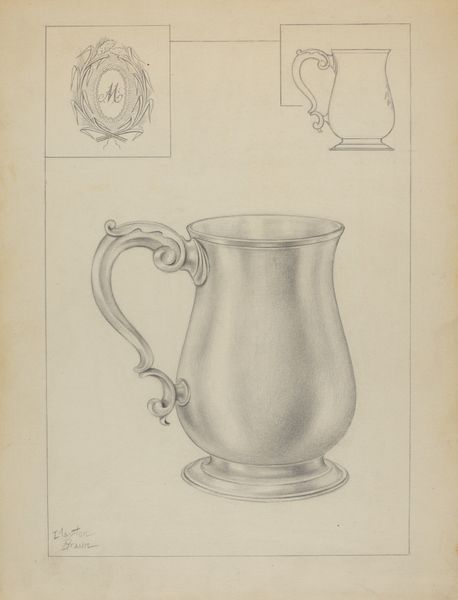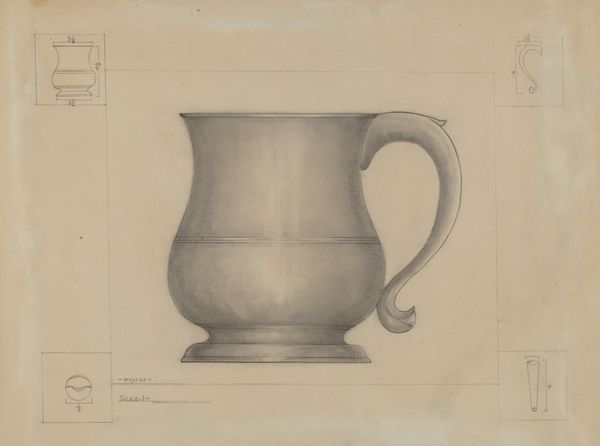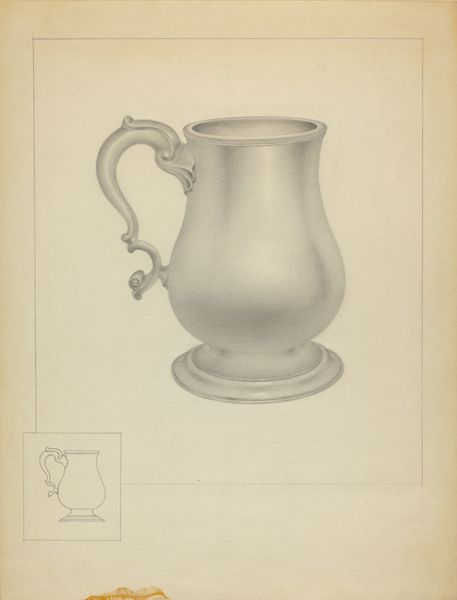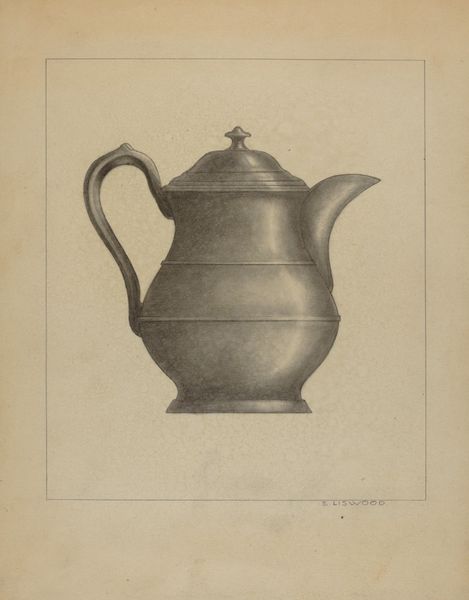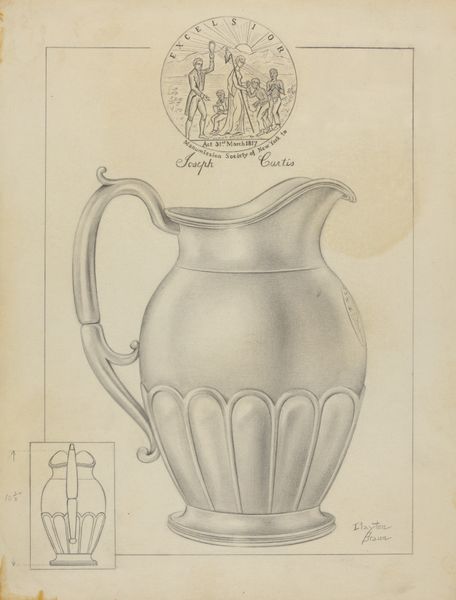
drawing, pencil
#
drawing
#
pencil drawing
#
pencil
#
academic-art
#
realism
Dimensions: overall: 29.3 x 22.8 cm (11 9/16 x 9 in.)
Copyright: National Gallery of Art: CC0 1.0
Curator: This drawing is titled "Pewter Pitcher," and was created by Sidney Liswood between 1935 and 1942. It’s rendered in pencil. The style is remarkably precise. Editor: There’s a certain quiet elegance to it, wouldn’t you say? It almost has the stillness of a photograph. The light seems to be caressing the curves of the pitcher. Curator: Absolutely. Liswood's academic approach to realism emphasizes a close observation of form and detail, doesn't it? It mirrors the broader interest in everyday objects that emerged in art during the interwar period, elevating functional items to the realm of art. Editor: I find it striking how the artist incorporated the various studies of the handle at the bottom, like fragmented memories, and the outlined shapes feel emblematic. It almost reads like a blueprint for a memory. A collective, familiar object. Curator: It does. The inclusion of those preparatory sketches offers a glimpse into Liswood's artistic process, doesn't it? He seems keen to underline this object's cultural position within the home. He prompts us to look beyond functionality, but as a potential artifact from a quickly vanishing moment of economic and cultural history. Editor: It speaks to that, for sure. The pewter pitcher is itself such a loaded signifier. A humble object, of course, but suggestive of hospitality, comfort. Perhaps even resourcefulness during less affluent times. And within a time of technological advances it marks a symbolic, historic moment. Curator: I think you're right. Its simplicity, its utility. Liswood positions it to embody a connection to simpler, perhaps idealized, domestic values. And the meticulous rendering elevates what might otherwise be an overlooked item to a site of contemplation about material culture and design, in the shadow of a long, global depression. Editor: Ultimately, though, for me it’s a testament to the emotional weight we invest in the objects that surround us, their ability to trigger memories. Curator: Indeed. It’s a study in how the ordinary can become extraordinary when seen through the lens of art. Editor: And how the familiar echoes, still.
Comments
No comments
Be the first to comment and join the conversation on the ultimate creative platform.
